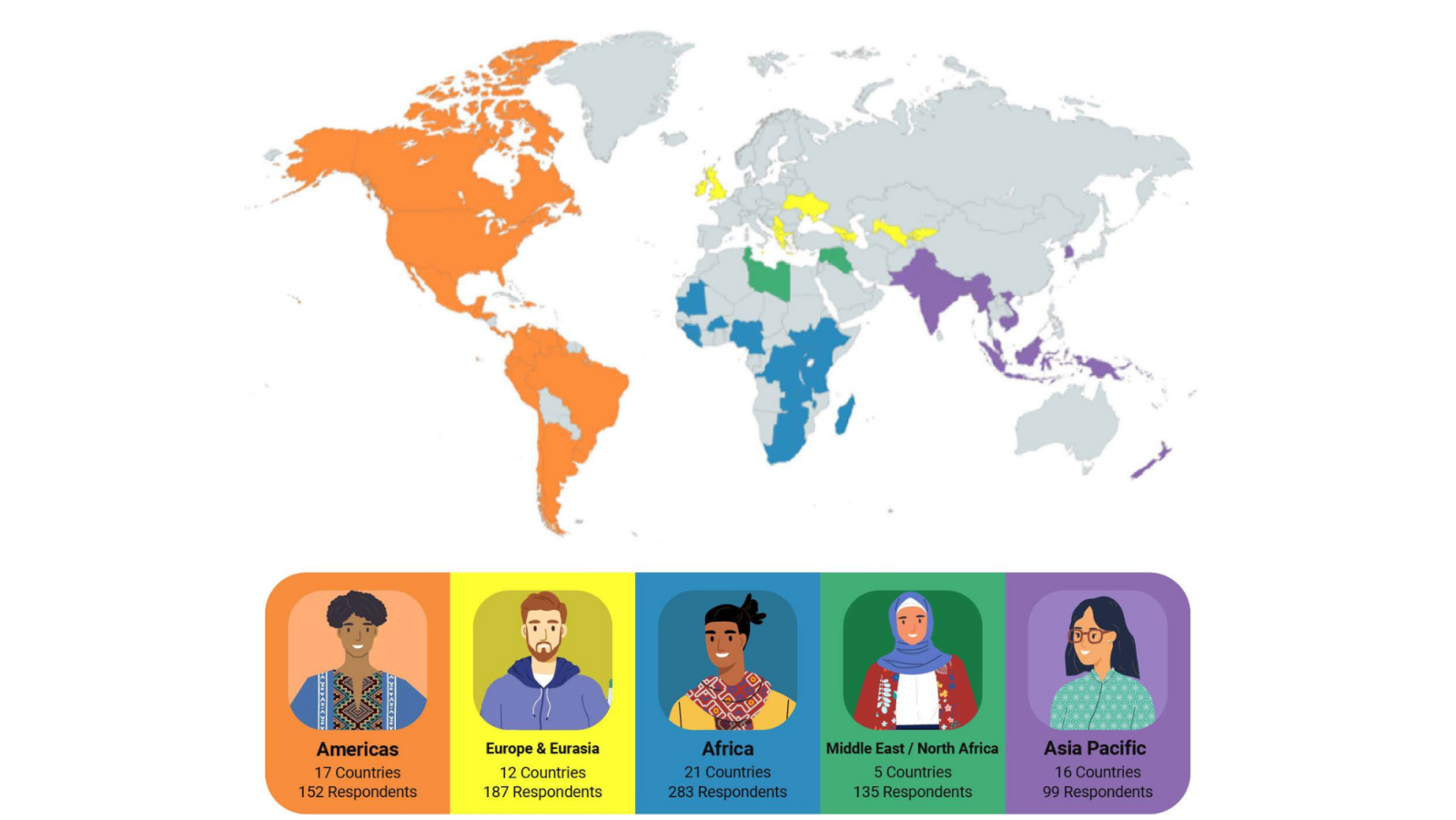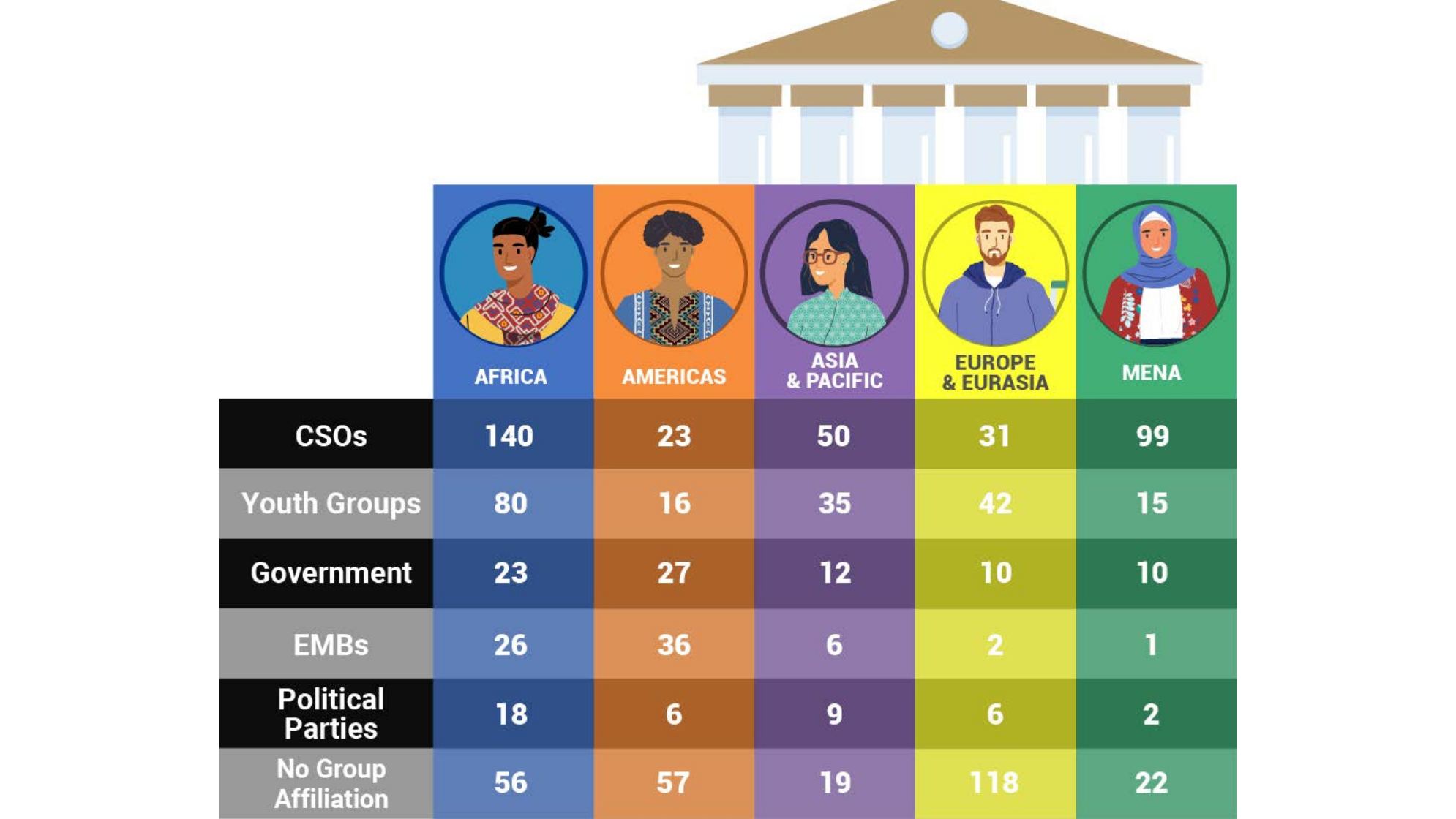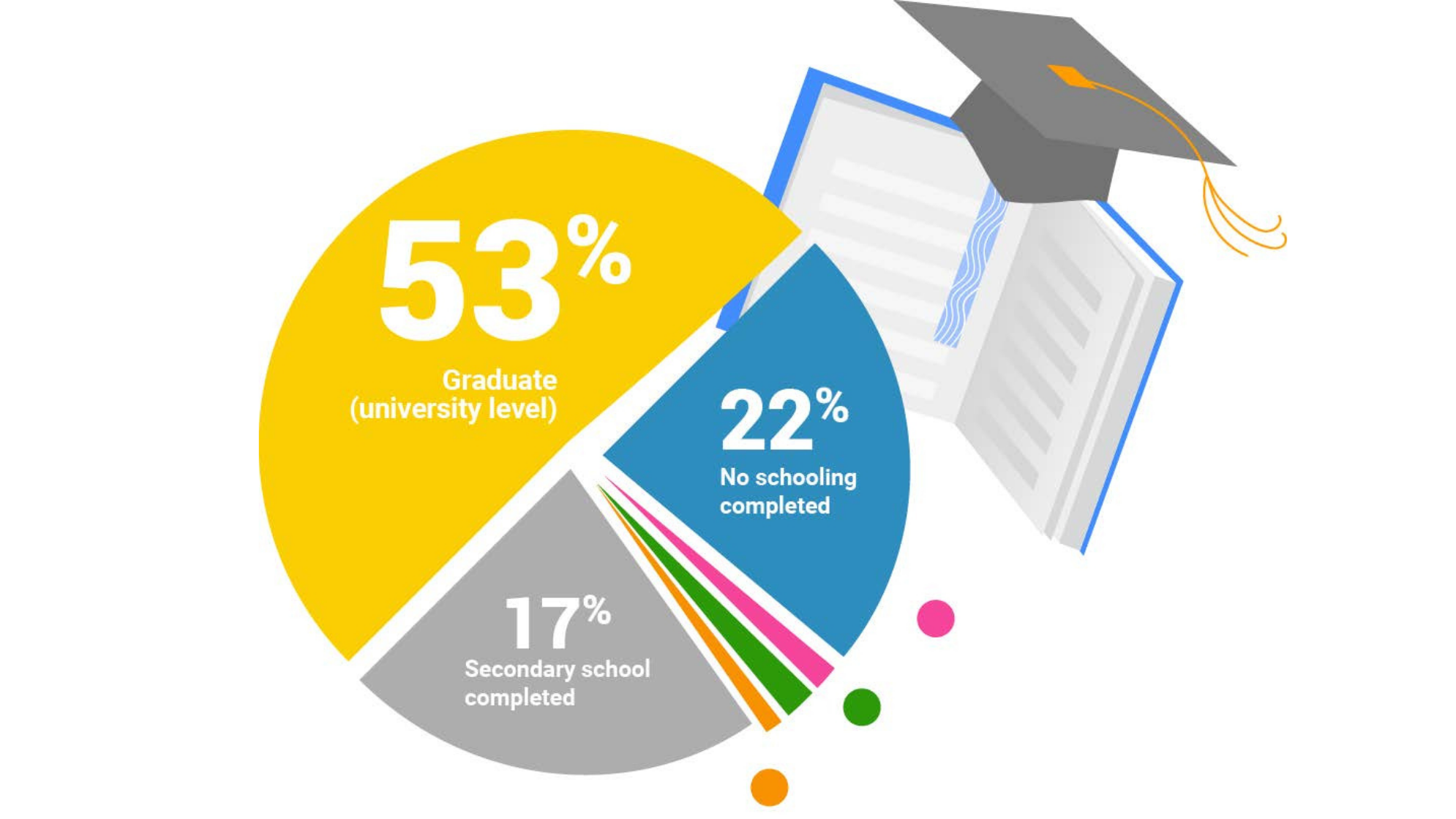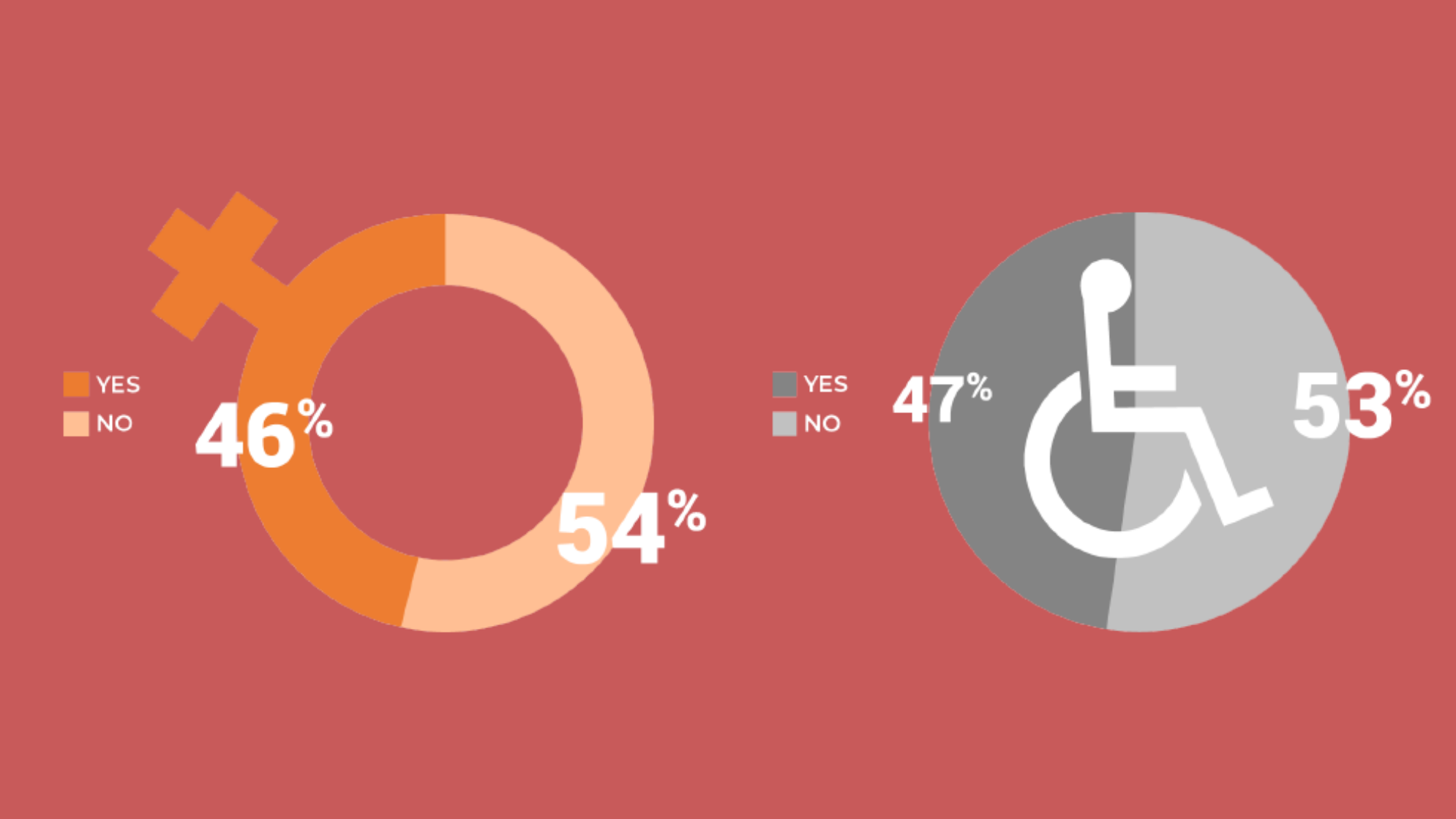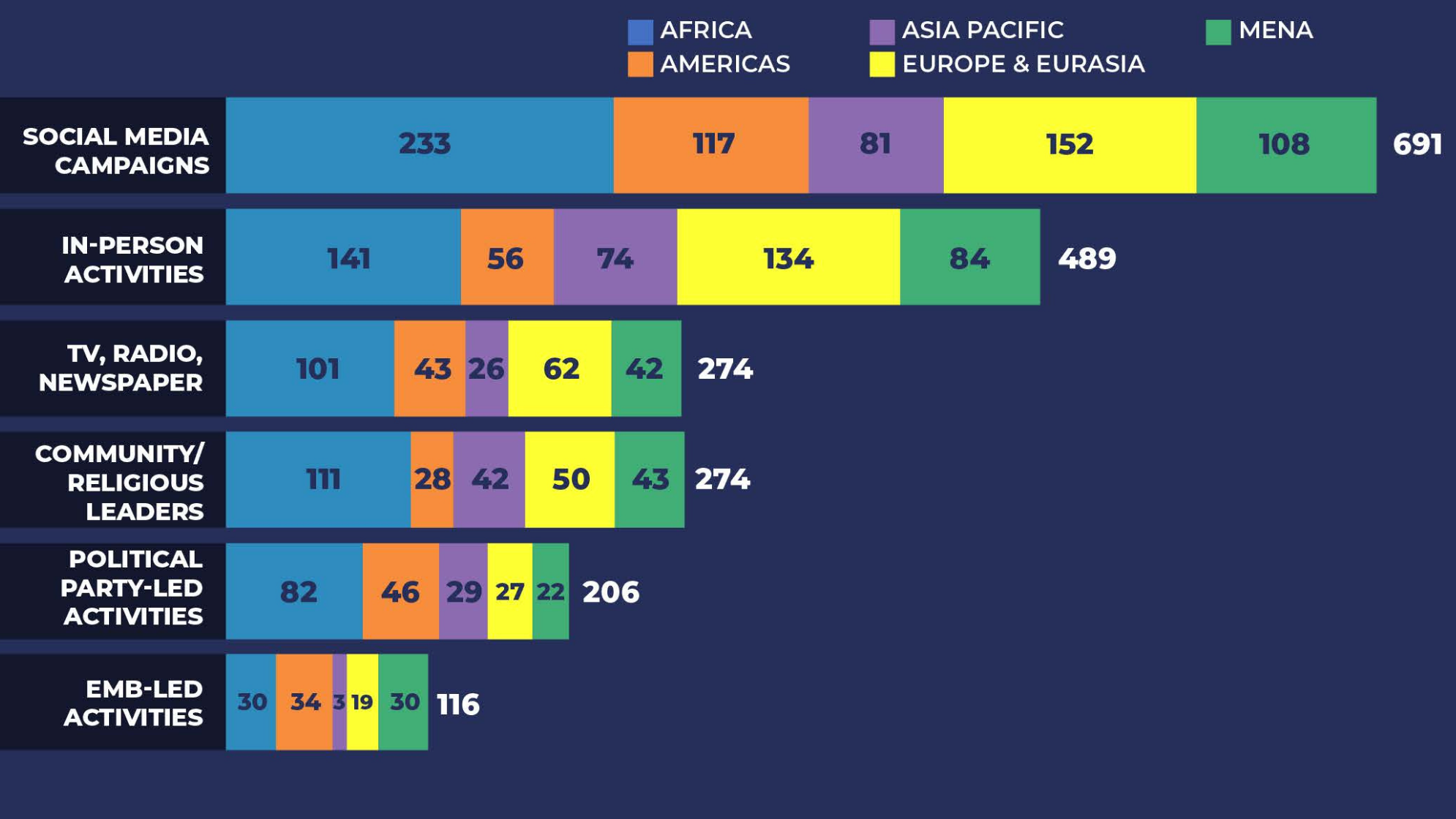Research Approach and Summary of Findings
IFES advances democracy for a better future and recognizes young people’s important role in building and sustaining democracies. To explore this connection, especially from the perspective of young people, IFES asked how civic education teaches young people to participate in democratic processes. Which strategies are effective in reaching all young people? How can civic education lead to or impact sustained political behavior?
IFES initiated a partnership with KDI, a longstanding youth partner of IFES’ work in Nigeria, to answer these questions. KDI’s priority areas align with IFES’ strategic areas of focus—in particular, a drive to create inclusive democracies that promote young people’s participation.17 IFES and KDI also connect on the importance of using evidence-based research to inform all programming.
IFES and KDI developed a research approach that included a global survey and FGDs. In several meetings, IFES and KDI workshopped survey questions to ensure that they would gather a broad set of information on what works in civic education and what can be improved. The global survey (Annex 1) reached 858 young people in 71 identified countries (see Figure 1), far surpassing what IFES and KDI expected. After the survey, IFES and KDI organized FGDs with young people in countries where the survey response rates were highest. The FGDs allowed space to explore the themes covered in survey responses, gather more nuanced details, and expand on recommendations that were identified in the survey data. The FGDs were co-facilitated by young people who work at IFES and KDI and young leaders from countries where the FGDs were held, for a total of 47 participants from Ecuador, Nigeria, Sri Lanka, Tunisia, and Ukraine.
Demographics of Young People Engaged in the Survey and FGDs
The survey data reflect diverse regional representation, with the largest number of respondents from Africa. Men and women were represented almost equally represented, although 51 percent of men were 30 years or older, while 68 percent of those who identified as women were under 30 years old (see Figure 5). Across most regions, respondents identified as affiliated with CSOs; 61 percent were employed or self-employed, and 28 percent were students (see Figures 2 and 3). Among all respondents, about 85 percent identified as living in urban areas, and 15 percent in rural areas (see Figure 4); 10 percent identified as persons with disabilities (see Figure 6).
Demographics of Young People Engaged in the Survey and FGDs Figures 2-6
Key Findings from the Survey and FGDs
Below are key takeaways and interesting data points gathered from the survey and FGD results.
Young people are active in their communities. Sixty-four percent of survey respondents claimed that young people were highly or somewhat engaged in electoral and governance processes in their country (Figure 7). When asked to describe their involvement in civic engagement, many cited volunteerism and service learning, advocacy and activism, and participation in youth associations or clubs. Respondents also identified electoral participation as one of the top ways that young people engage in their communities (Figure 8).
Key Findings Figures 7-8
Not all young people have equitable access to participate in civic and political life. About half of all survey respondents believed that young women and young people with disabilities do not have equal access to engage in their communities (see Figures 9 and 10). This response rate was similar among women and respondents with disabilities. Societal exclusion, stigmatization and discrimination, cultural norms, and legal barriers were raised as obstacles to their participation.
Social media is an effective method for engaging young people. Most survey respondents, including 78 percent of those living in rural areas, identified social media campaigns as the most effective nonformal civic education method for engaging young people (see Figure 11). Respondents also identified social media campaigns as the nonformal civic education strategy that they see young people leading most in their communities.
Key Findings Figures 9-11
Citations
More information on IFES’ Strategic Plan 2020–2024 can be found at https://www.ifes.org/about-us




